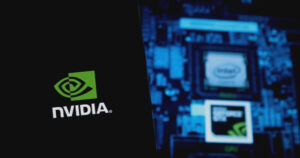Tackling Ghost Nets: How AI is Revolutionizing Marine Conservation
By Iris Coleman
Published on Jun 08, 2025
In a groundbreaking achievement for marine conservation, a cutting-edge AI tool has been introduced to locate and identify abandoned fishing nets, commonly known as ghost nets. This innovative technology is set to make a significant impact in mitigating the harmful effects these derelict nets have on marine wildlife.

The Alarming Reality of Ghost Nets
Every year, an estimated 80,000 square kilometers of fishing nets are lost in oceans worldwide, constituting about 2% of global fishing gear. These nets wreak havoc on marine ecosystems, ensnaring seals, turtles, and dolphins, often leading to their untimely deaths. With decomposition, they also contribute substantially to oceanic plastic pollution.
The consequences are dire: ghost nets can remain in the water for years, continuing to trap and kill marine life. The need for effective identification and removal has never been more pressing.
Innovative Technology: GhostNetZero.ai
In a monumental collaborative effort, WWF Germany has partnered with Accenture and Microsoft’s AI for Good Lab to create GhostNetZero.ai. This state-of-the-art online platform aggregates high-resolution underwater data from diverse sources—including research institutes and offshore wind-power companies—to pinpoint ghost nets effectively.
Powered by a Convolutional Neural Network (CNN) utilizing DeepLabV3 and ResNet50 architectures, this AI tool scans sonar data to identify ghost nets with an impressive 94% accuracy rate. Each sonar image comes with geolocation metadata, allowing for precise tracking and locating of these environmental hazards.
Collaboration for Effective Net Removal
Once ghost nets are identified, local divers and fishermen play a crucial role. Their on-the-ground expertise helps confirm the presence of the nets and gather vital information, such as the nets’ sizes and conditions. Gabriele Dederer, a project manager at WWF Germany, emphasizes the significance of regional collaboration, pointing out that local protocols are vital due to the logistics and costs involved in net retrieval.
Currently, this initiative is actively operating in France, Estonia, and Sweden, with plans to expand to more regions. The partnership with Microsoft and the utilization of NVIDIA’s GPU technology have bolstered the project’s efficiency and accuracy, showcasing the power of technology in conservation efforts.
A Bright Future: The Role of AI in Marine Conservation
Christian Bucher from Microsoft highlights the transformative role of AI in recognizing patterns, essential for distinguishing the myriad forms of ghost nets in sonar imagery. As local teams validate findings from the AI, this feedback continuously enhances the tool’s performance, fostering a cycle of improvement.
This innovative endeavor represents a shining beacon of hope in the fight against marine pollution. By harnessing cutting-edge technology, we not only identify existing threats but also chart a path toward effective removal and prevention strategies.
At Extreme Investor Network, we believe that integrating advanced technologies with conservation efforts can lead to a sustainable future for our oceans. As we monitor these developments, we invite you to join the conversation on how we can collectively work towards a cleaner and healthier marine environment.
Conclusion
The introduction of AI tools like GhostNetZero.ai marks a pivotal step in addressing the challenges posed by ghost nets. As we further explore the intersection of technology and conservation, each action taken today can pave the way for a more sustainable tomorrow. Stay tuned for more updates from the Extreme Investor Network as we continue to uncover innovative solutions to the pressing environmental issues of our time.

